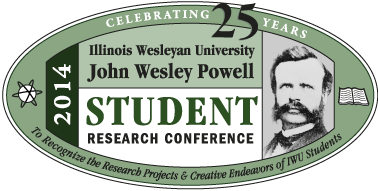Carving the Perfect Citizen: The Adventures of Soviet Pinocchio in Text and on Screen
Submission Type
Event
Expected Graduation Date
2014
Location
Room E108, Center for Natural Sciences, Illinois Wesleyan University
Start Date
4-12-2014 11:00 AM
End Date
4-12-2014 12:00 PM
Disciplines
English Language and Literature
Abstract
In 1936, Alexei Tolstoy’s The Golden Key, or The Adventures of Buratino was published, heralding the use of children’s literature and fairy tale structure as an ideological and transformative tool for children in the Soviet Union. The Adventures of Buratino, framed by Alexei Tolstoy’s alleged recreation from memory of Carlo Collodi’s The Adventures of Pinocchio (1883), was a Soviet fairy tale, portraying Buratino as a hero for his fellow puppets in helping to free them from the corrupt and oppressive power of Karabas Barabas, the owner of the puppet theater. While Barabas serves as an embodiment of an exploiter and degenerate capitalist, Buratino is depicted as a true revolutionary, who is selfless, who fights for collective goals, and represents the liberator for the poor and oppressed.
As a Soviet tale, Buratino has several incarnations: one, of course, being Tolstoy's original text, another as a play, and two as film representations. For my project, I will track the change in visual representation of Buratino and the possible ideological implications and controversies that these changes might have as the story shifts from Tolstoy's narrative to the Soviet 1939 (employing both animation and live action characters) and Soviet-time Belarussian 1975 TV musical for children.
In addition, importance will be placed on the manner in which characters from Buratino are present, absent, or simply transformed from the original Pinocchio. The Soviet film versions will be compared to American visual representations of Pinocchio in the 1940 Disney film that also presented an ideologically charged visualization of an old fairy tale.
Carving the Perfect Citizen: The Adventures of Soviet Pinocchio in Text and on Screen
Room E108, Center for Natural Sciences, Illinois Wesleyan University
In 1936, Alexei Tolstoy’s The Golden Key, or The Adventures of Buratino was published, heralding the use of children’s literature and fairy tale structure as an ideological and transformative tool for children in the Soviet Union. The Adventures of Buratino, framed by Alexei Tolstoy’s alleged recreation from memory of Carlo Collodi’s The Adventures of Pinocchio (1883), was a Soviet fairy tale, portraying Buratino as a hero for his fellow puppets in helping to free them from the corrupt and oppressive power of Karabas Barabas, the owner of the puppet theater. While Barabas serves as an embodiment of an exploiter and degenerate capitalist, Buratino is depicted as a true revolutionary, who is selfless, who fights for collective goals, and represents the liberator for the poor and oppressed.
As a Soviet tale, Buratino has several incarnations: one, of course, being Tolstoy's original text, another as a play, and two as film representations. For my project, I will track the change in visual representation of Buratino and the possible ideological implications and controversies that these changes might have as the story shifts from Tolstoy's narrative to the Soviet 1939 (employing both animation and live action characters) and Soviet-time Belarussian 1975 TV musical for children.
In addition, importance will be placed on the manner in which characters from Buratino are present, absent, or simply transformed from the original Pinocchio. The Soviet film versions will be compared to American visual representations of Pinocchio in the 1940 Disney film that also presented an ideologically charged visualization of an old fairy tale.

